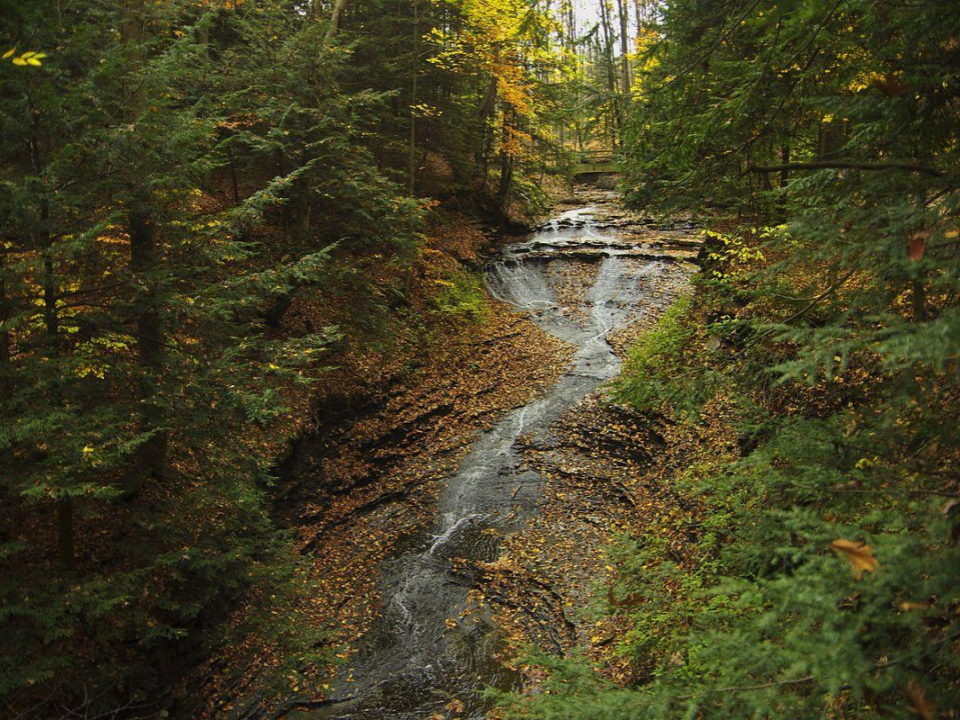In 1974, President Gerald Ford cemented Cuyahoga Valley as a National Recreation Area with the stroke of a pen. At the time, it was a controversial move. Even Ford’s signature was reluctant, as Ford said “The Cuyahoga Valley possesses no qualities which qualify it for inclusion in the National Park System.” Half a century later, the park has undergone a change in classification, restored a once toxic river and created countless memories for families across the nation.
Park Ranger Emily Garrison argues that Cuyahoga Valley’s contributions are indisputable. Garrison said, “It adds a sense of place… In 2023, it was the 12th-most-visited national state park.”
A core attraction point for these visitors is Cuyahoga Valley’s designation as a national park. Before 2001, Cuyahoga Valley had been given the murky definition of a “National Recreation Area.” This famously bothered Representative Ralph Regula, who argued the park classification was more appealing to visitors. To solve this issue, Regula tagged a single sentence designating Cuyahoga Valley as a national park onto an unrelated appropriations bill. With President’s Clinton’s signature, Cuyahoga Valley became a national park on Oct. 11, 2000.
Another way Cuyahoga Valley attracts these visitors is by housing a diverse set of park experiences. These include Blossom Music Center, an open-air concert venue in Cuyahoga Falls, and Hale Farm, a historic farmstead in Bath Township.
These assets, and others like them, have been the backdrop for innumerable memories among millions of visitors since the site was first redesignated a park by Congress. Throughout the years, these visitors have included guests from far and near, including John Carroll’s own Hiking Club. Hiking Club President Alivia Franklin ’26 said, “Cuyahoga Valley National Park has become a favorite location for hikes over the past few years and it’s awesome to see so much appreciation for it.”
However, the Cuyahoga Valley National Park does not only serve as a hub for humans. It also functions as a rare place for humans and wildlife to co-exist. Garrison says this preservation effort is still being hard-won.
“I personally love our restoration stories, especially when it comes to the river,” said Garrison. Since the beginning, this restoration has been spearheaded by the community. In 1969, the Cuyahoga River grew so polluted that it caught fire.
When an image purporting to be the infamous burning river graced the cover of “Time Magazine,” it was a clarion call to an increasingly environmentally conscious nation. The community demanded action, kicking off the modern environmental movement seen today.
The river now stands as a symbol of pride. Decades of restoration have turned what was once a toxic environment into one teaming with life, home to over 40 species. Other restorative projects include a 2023 effort to protect the valley from abandoned oil rigs along with removing toxins from a former dumping ground. The Cuyahoga community remains deeply involved in this restoration work. Garrison said, “We have a very active volunteer office.” In this case, restoration takes more than a village. It takes a valley.
In September 2024, The Cuyahoga Valley National Park kicked off its 50th Anniversary Celebration season with a special presentation on the park’s history. The celebration will continue throughout 2025, as the park offers special programming, along with collectible stickers and stamps.
Garrison said, “Our 50th is a great time to reflect on who we are as a park and all the stories this park holds, from the people that live here long before us to the memories visitors make in the park today.” 50 years ago, President Ford claimed Cuyahoga Valley had “No qualities which qualify it for inclusion in the national park system.” Today, millions of visitors and hundreds of species beg to differ.


